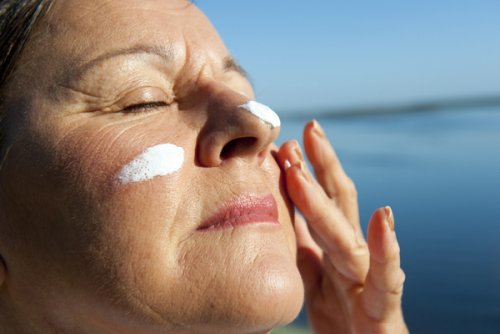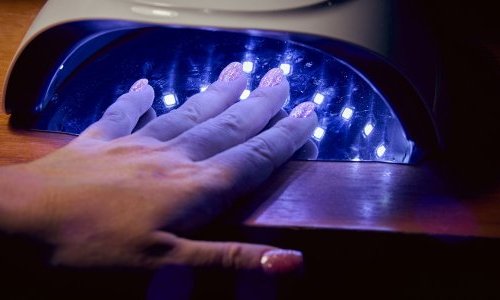
The use of sunscreens to prevent skin cancer or in anti-aging skin care products has accelerated in recent years. Photo : © Rob Bayer / shutterstock.com
Findings of a recent study published in the British Journal of Dermatology (BJD) [1] suggest an association between sunscreens contained in facial skin care products and the increased frequency of frontal fibrosing alopecia (FFA) among women. Described for the first time in 1994 in Australia, FFA is an inflammatory scarring alopecia that mainly involves the frontal and frontal / temporal hairline and eyebrows. FFA mainly affects postmenopausal women although it also occurs in younger women and occasionally in men. FFA remained rare during the 1990s but has become increasingly common in the last 10-15 years
105 women questioned
In order to identify possible causes of this new disease, a questionnaire enquiring about exposure to a wide range of lifestyle, social and medical factors was completed by 105 women with FFA and 100 age and sex-matched control subjects. A sub-cohort of 40 women with FFA was patch tested to an extended British standard series of allergens.
“This study would not have been possible 15 years ago. The fact that we and others are now able to recruit large numbers of patients with FFA with relative ease is illustrative of the rising incidence of this disease, making it difficult to escape the conclusion that an external cause is responsible,” explain the authors.
Possible link with UV filters
Results of the questionnaire show that the use of sunscreens was significantly greater in the FFA group compared with controls. Subjects with FFA also showed a trend towards more frequent use of facial moisturizers and foundations but, compared with controls, the difference in frequencies just failed to reach statistical significance.
The high frequency of positive patch tests among the FFA group could implicate fragrances. However, “fragrances have been present in facial cosmetics for many years and this would not explain the apparent recent surge in incidence of FFA,” highlight the authors.
Actually, the clue may reside in the frequency of sunscreen use. Twice as many women in the FFA group regularly used a sunscreen compared with controls. “Although the use of dedicated sunscreens by subjects with FFA did not approach universality it is noteworthy that many facial moisturizers now contain sunscreen chemicals, a trend that has accelerated in recent years.”
The authors also point that allergy to sunscreen chemicals is well recognized although uncommon and that the first cases of FFA were reported from Australia where a campaign promoting the use of sunscreens to prevent skin cancer was launched in 1981.
However, the authors admit they cannot exclude the possibility that the higher use of sunscreens and skin care in the FFA group reflects a tendency by these women to ‘look after’ their skin (due to the aesthetic consequences of the disease). They also highlight the fact that the low level of discrimination between subjects with FFA and control groups with regard to the use of facial products is a significant limitation.
Moreover, the study does not make it possible to determine which solar filters are possibly involved.




























